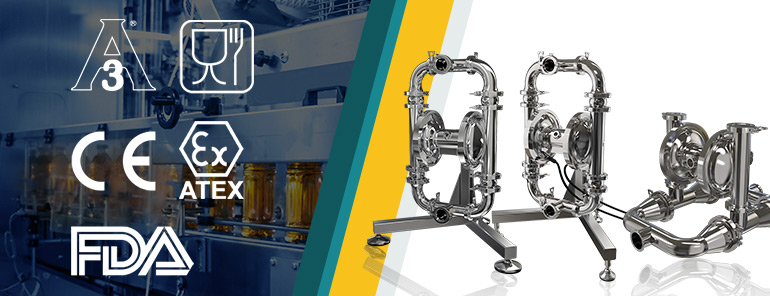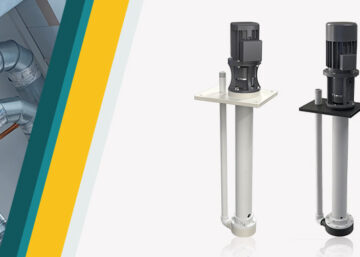In the process of purchasing a diaphragm pump that meets your specific application needs, it is essential to carefully examine all the aspects that influence performance and reliability factors. Double Diaphragm pumps stand out for their versatility and ability to adapt to a wide range of industrial applications. However, to ensure optimal operation and long-lasting performance, it is crucial to consider six crucial questions during the selection process.
In this article, we will explore in detail the points that should be taken into consideration when addressing the selection process of an AODD pump. We will delve into each aspect thoroughly, providing practical advice and useful information to assist you in choosing the most suitable double diaphragm pump for your industrial needs.
1. What type of fluid will be pumped?
The first question to consider concerns the characteristics of the fluid that the pump will handle. It is important to evaluate the chemical composition, corrosiveness, and viscosity of the fluid. The viscosity of the fluid, i.e., its resistance to flow, will influence the pump selection. Some fluids may be more viscous than others and require a pump capable of handling this characteristic. If the pumped fluid contains abrasive solid particles, it is crucial to choose an abrasion-resistant pump. Certain construction materials are more suitable for withstanding wear caused by abrasive particles. Some fluids may require specific construction materials to avoid pump damage or product contamination. It is important to verify the chemical compatibility between the fluid and the pump’s construction materials to ensure reliable and safe operation. Other parameters, such as pH, specific weight, or the presence of suspended solids, should also be taken into account.

2. What is the desired flow rate of the pump?
The required flow rate, i.e., the volume of fluid that the pump needs to move within a specific time interval, is a crucial factor. It is necessary to carefully evaluate the volumetric flow rate required for each individual application and ensure that the selected pump can effectively meet the desired flow rate without compromising performance.
3. What are the installation conditions?
Considering the specific installation conditions for the AODD pump is essential. Two key aspects to evaluate are the head pressure and the suction lift.
The head pressure refers to the pressure difference that the pump needs to overcome to move the fluid from the source to the destination point. The pump must be able to generate the necessary pressure to overcome hydraulic resistances present in the system.
The suction lift refers to the vertical distance from the pump to the fluid source. If the fluid needs to be drawn from a tank or well, it is important to consider the maximum suction lift that the pump can handle. Some AODD pumps can offer high suction lift capacity, allowing fluid extraction from significant depths.

4. What are the fluid and operating environment temperatures?
The fluid temperature is an important factor to consider when selecting an AODD pump as it can impact the pump’s performance, construction materials, and overall reliability. Elevated fluid temperatures can affect the diaphragms and valves of the pump, leading to premature wear and failures. Additionally, high temperatures can influence the pump’s air motor, reducing efficiency and increasing energy consumption.
In selecting an AODD pump for a specific application, the temperature range for which the pump is designed is also important. Some AODD pumps are specially designed to handle high-temperature fluids, while others may not be suitable for extremely cold temperatures, which can cause freezing issues in the system.
5. What certifications are required in the application industry?
The last consideration to keep in mind when selecting an AODD pump relates to the certifications that the pump needs to have.
For use in environments where explosions can occur, such as the mining or petrochemical sector, it is necessary for the AODD pump to have ATEX certification. IECEx certification demonstrates compliance with Ex standards and provides additional safety and reliability assurance for pump use in high-risk environments. In the food or pharmaceutical industry, the FDA (Food & Drug Administration) regulates all aspects related to the contact of materials with food or pharmaceutical products used in the production process. In our specific case, the purpose of the regulation is to identify the most suitable pump materials and finishes for handling contact with fluids used in the food or pharmaceutical production process.
Ensuring pump compliance with these regulations is essential for operator safety and compliance with applicable laws. Before using a pump in a specific environment or sector, always ensure compliance with relevant regulations and directives.
DEBEM Diaphragm Pumps: Reliable and Adaptable Choice for Every Need
Choosing the right double diaphragm pump for your business can make a difference in a production process where high efficiency and reliability standards are required. In this perspective, DEBEM pumps stand out as a reliable and adaptable choice to tackle all these variables. Thanks to their innovative design, quality materials, and advanced technical solutions, DEBEM pumps can meet diverse industrial needs, ensuring optimal performance and long-lasting durability.
For further information on the selection and installation of DEBEM pumps or for personalized consultation regarding your specific requirements, our team of experienced technicians is ready to assist you. Contact us and discover how DEBEM pumps can improve your productivity, safety, and efficiency in your industrial processes.








